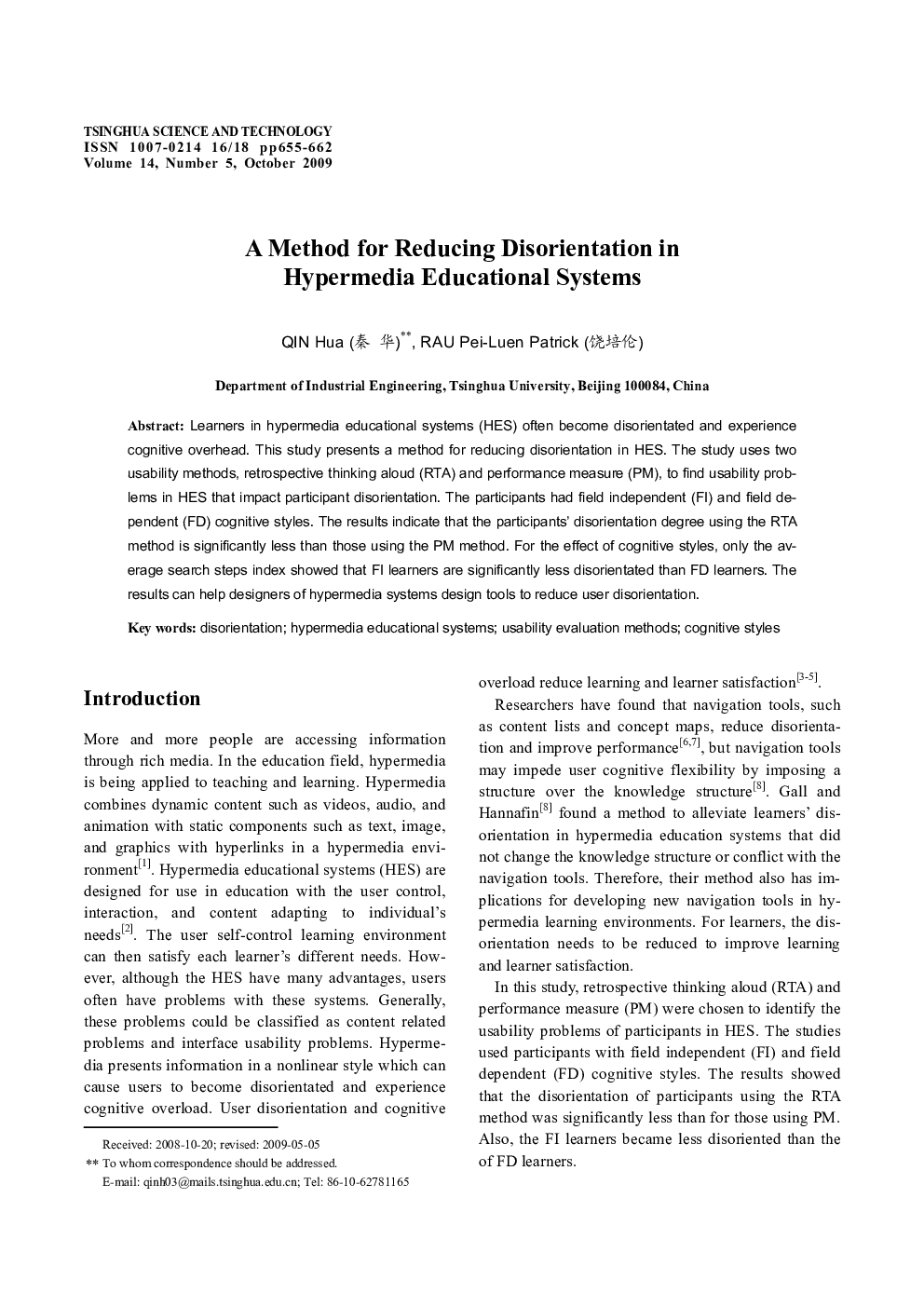| Article ID | Journal | Published Year | Pages | File Type |
|---|---|---|---|---|
| 865474 | Tsinghua Science & Technology | 2009 | 8 Pages |
Abstract
Learners in hypermedia educational systems (HES) often become disorientated and experience cognitive overhead. This study presents a method for reducing disorientation in HES. The study uses two usability methods, retrospective thinking aloud (RTA) and performance measure (PM), to find usability problems in HES that impact participant disorientation. The participants had field independent (FI) and field dependent (FD) cognitive styles. The results indicate that the participants' disorientation degree using the RTA method is significantly less than those using the PM method. For the effect of cognitive styles, only the average search steps index showed that FI learners are significantly less disorientated than FD learners. The results can help designers of hypermedia systems design tools to reduce user disorientation.
Related Topics
Physical Sciences and Engineering
Engineering
Engineering (General)
Authors
Qin (秦 å), Rau (饶å¹ä¼¦),
